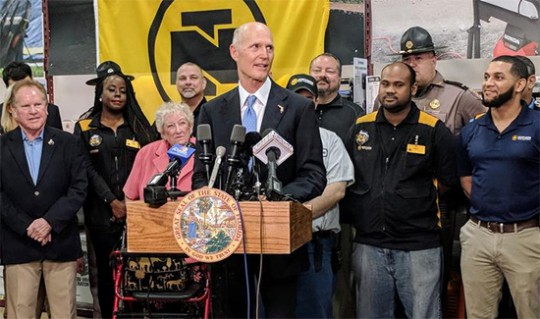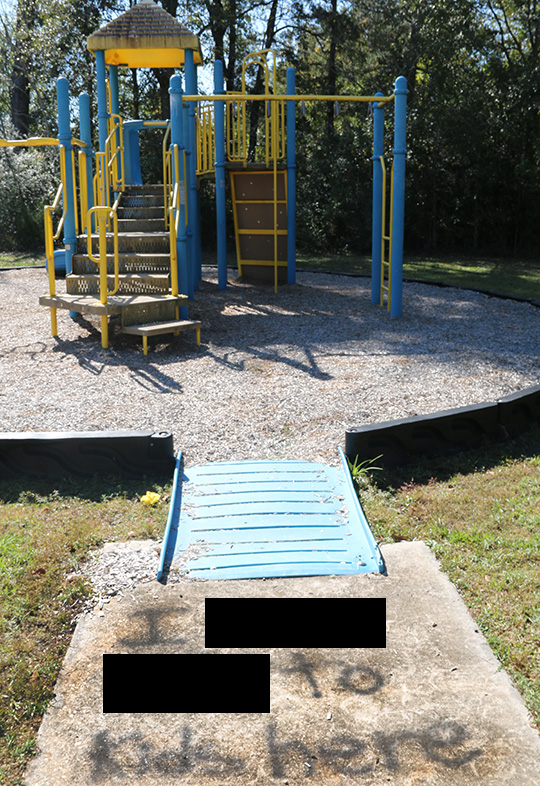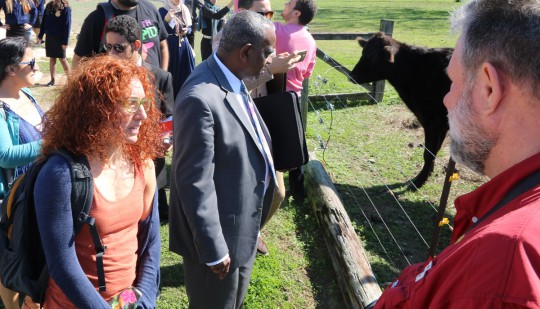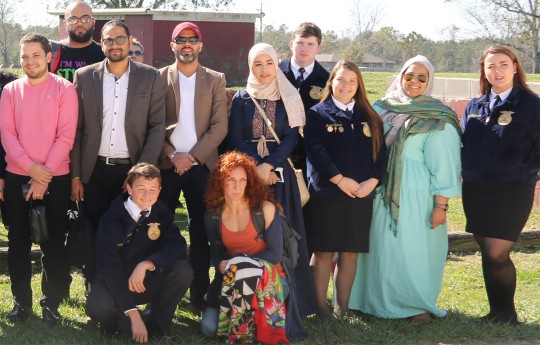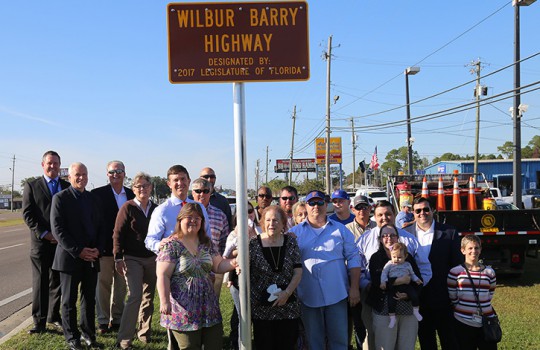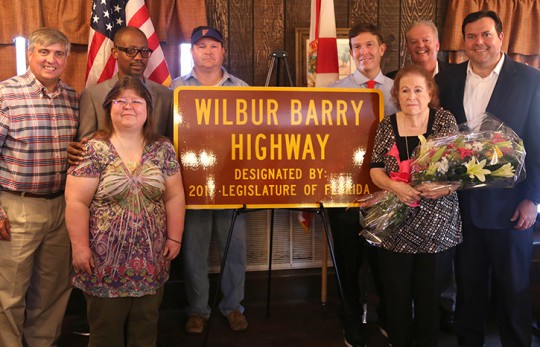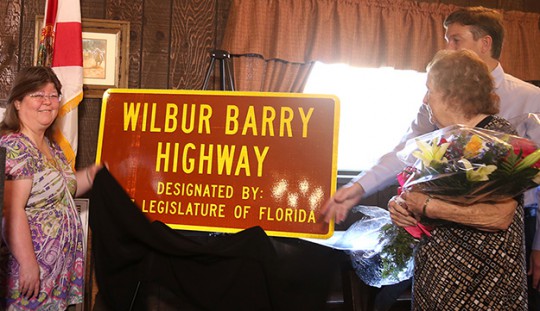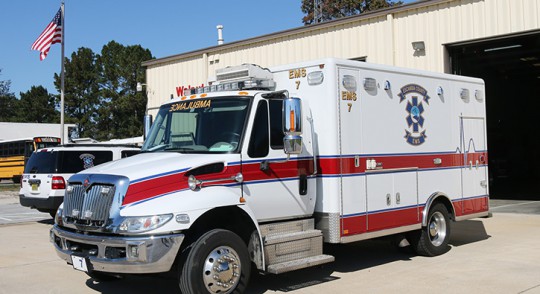Scott Budget Seeks Tax Cuts, Education Money
November 15, 2017
With a backdrop of generators, chainsaws and pressure washers in a Duval County hardware store, Rick Scott on Tuesday unveiled his final budget proposal as Florida’s governor, releasing an $87.4 billion plan that calls for $180 million in tax cuts and increased education spending.
“In 2010, when I (first) ran for election most people doubted that a business person could come in and try to turn this economy around and run a budget to cut taxes and make historic investments in education,” Scott said at a news conference at Northern Tool + Equipment. “But we have actually done all of those things.”
Scott previously outlined his $180 million tax-cut proposal, which includes three week-long disaster preparedness tax “holidays” in May, June and July when consumers would be able to buy hurricane-related supplies like batteries, radios, waterproof sheeting and generators without paying sales taxes. The measure would exempt the cost of generators up to $750.
As part of the proposal, Scott also wants a 10-day back-to-school sales tax holiday and a reduction in a number of motorist-related fees, including cutting the renewal fee for driver’s licenses from $48 to $20.
But Scott’s final tax-cut plan is far less ambitious than his initial effort as a new governor in 2011, when he called for the elimination of the $2.2 billion corporate income tax. Over his seven years as governor, Scott managed to reduce the number of businesses that pay the tax, although collections have grown annually by about $200 million.
“I would like to cut even more,” Scott said. “I think we have to figure out how to reduce the cost of government. We made a lot of progress but there is always more to do.”
Scott’s 2018-2019 budget proposal is more than $4 billion larger than the current $83 billion budget. His budget aides said the increase was related to more than a $1.4 billion increase in state revenue and increases in federal funding, including for the Medicaid program.
His budget plan includes more than $5 billion in reserve funds.
“I have 419 days to go,” Scott said. “I’m going to fight every day to make sure this is the number one state for education, for jobs and for public safety.”
The governor’s proposal is a starting point for lawmakers as they negotiate a budget during the 2018 legislative session, which starts in January. Economists have indicated lawmakers will have a tight budget.
Scott is calling for a $200 increase in per-student funding for Florida’s pre-kindergarten through 12th grade school system. The proposal would increase per-student spending to $7,497, a 2.74 percent increase.
The $770 million increase, which would cover the cost of an additional 27,000 new students, includes $534 million in increased local property-tax revenue. House leaders have characterized the rise in local property tax collections as a tax increase, calling for the tax rate to be rolled back to reflect the increase.
In documents accompanying the budget proposal, Scott’s office defended using the increase in local tax collections, saying “when property values raise, it’s a good thing for Florida families.”
Former U.S. Rep. Gwen Graham, a Democrat who is running for governor, criticized Scott’s school spending plan, noting the state cut more than $1 billion from the education budget in 2011.
“We still haven’t recovered from those massive cuts,” Graham said. “Adjusted for inflation, per-student funding would still be less under Rick Scott’s new budget than it was when he took office.”
Scott’s budget would restore a $30 million cut in the current budget for state and community colleges and would include a $30 million increase. It would provide a total of $120 million in performance funding for the 28-school system.
The state university system would see a slight increase, with Scott advocating $670 million in performance funding for the 12-school system, which would be a $150 million increase over this year.
But $120 million of that increase would come from moving funds from programs designed to reward high-performing graduate schools and hire top-level professors, which were initiatives backed by Senate President Joe Negron, R-Stuart.
Scott’s budget does not include a tuition increase for state colleges or universities. And Scott supports legislation that would permanently cover full tuition and fees for the highest-performing Bright Futures scholarship recipients and allow them to attend summer school.
Scott’s budget includes $230 million in affordable housing programs, including $20 million for workforce housing in the Keys, which were heavily damaged by Hurricane Irma. But his budget also would sweep $92 million from an affordable-housing trust funds to help pay for other expenses in the budget.
Another priority for Scott, as well as the Legislature, is the state’s opioid epidemic.
Scott wants to spend $53 million — more than half of which comes from federal funds — to address the issue.
His plan would earmark $4 million to help mentally ill patients and drug addicts get housing, which experts say is one of the chief barriers to recovery. He’s also set aside $15 million in enhancements to the substance-abuse treatment system, which would include 53 additional residential treatment beds, emergency room treatment and follow-up, and targeted outreach for pregnant women with substance-abuse disorders.
His proposal also would spend $5 million on Naloxone, an overdose-reversal drug, for first responders. And the governor would steer $1.2 million on upgrades to the state prescription-drug monitoring program, which keeps track of prescriptions for controlled substances.
Scott’s also wants to direct $4 million to local law-enforcement agencies to conduct investigations related to opioid abuse.
In the criminal justice arena, Scott’s tagged $68 million for mental-health services in the state’s prisons.
The recommendation comes after Disability Rights Florida, which represents disabled prisoners, threatened to sue the state over the treatment of mentally ill prisoners. The state and the organization are in the midst of settlement negotiations.
Overall, Scott’s budget would increase the state workforce by 827 positions, while eliminating 262 primarily vacant jobs, for a net increase of 565 positions.
by Lloyd Dunkerberger and Dara Kam, The News Service of Florida
O.C. Phillips Bridge Closes; Residents Concerned Long Detour Will Flood
November 14, 2017
The Florida Department of Transportation has closed the Brushy Creek Bridge on O.C. Phillips Road about a mile east of South Pineville Road due to a failed inspection.
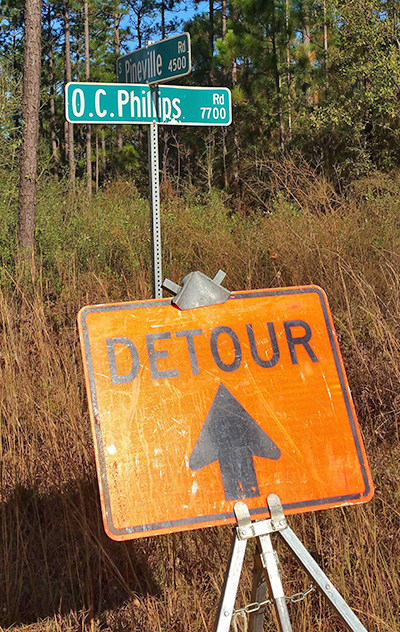 Coupled with last week’s closure of the Arthur Brown Road bridge at Freeman Springs Branch, between Pine Forest and Pineville roads, some residents are faced with a detour of up to 15 miles using Pineville Road. Much of detour is on the very remote and rural dirt Pineville Road and across a Pineville Road bridge the usually floods after heavy rainfall.
Coupled with last week’s closure of the Arthur Brown Road bridge at Freeman Springs Branch, between Pine Forest and Pineville roads, some residents are faced with a detour of up to 15 miles using Pineville Road. Much of detour is on the very remote and rural dirt Pineville Road and across a Pineville Road bridge the usually floods after heavy rainfall.
“This is ridiculous and we are sick of it,” said Tracy Garrett, a local resident now forced to use the long detour. “If it rains too much the lower bridge will be under water.”
“Both of those bridges were under water not three weeks ago,” Garrett said.
“I apologize to the residents that have to deal with it,” Escambia County District 5 Commissioner Steven Barry said. “I am going to work to see that we expedite the procurement process for both bridges to get the residents back to their daily routine as soon as possible.”
Barry stressed that the closure are due to state inspections. When those inspections show a structural deficiency, the county must follow the state order to close the bridge.
Even with next week’s Thanksgiving holiday, Barry said he believes the commission can use the county’s general pricing agreement with contractors in order to have replacement contracts ready for approval at the commission’s next meeting on November 30 in order to get repair work started soon.
Photos for NorthEscambia.com, click to enlarge.
Graffiti Claiming Child Sex Abuse, Racial Slurs Painted At Molino Park
November 14, 2017
Editor’s Note: Some readers may find the following story offensive.
Someone painted graffiti referring to underage child sexual abuse, racial symbols and slurs at a Molino park.
The spray-painted graffiti was discovered over the weekend mostly near the playground at Fairground Park at the Molino Boat Ramp on the Escambia River.
Graffiti proclaiming that child sexual abuse occurs there was painted on the sidewalk entrance to the playground stating “I (sexual expletive) to kids here”. Additionally, racial slurs and symbols were painted on handicap parking spaces and a portable bathroom.
Fairground Park is owned by Escambia County at 6698 Fairground Road.
Anyone with any information on the incident is asked to call the Escambia County Sheriff’s Office at (850) 436-9620 or Crime Stoppers at (850) 433-STOP.
Pictured top: Graffiti at the the playground entrance of Fairground Park in Molino proclaims that”I (sexually expletive) to kids here”. Pictured inset and below: Graffiti painted Fairground Park in Molino was so offensive that we can’t show it on NorthEscambia.com. NorthEscambia.com photos, click to enlarge.
International Group Visits Northview High’s Ag Program, FFA
November 14, 2017
The Gulf Coast Citizen Diplomacy Council and the U.S. Department of State hosted an international delegation Monday at Northview High School. The group met with Northview High FFA students and agriscience instructors to learn about the benefits of experiential learning for students and how students are able to translate skills from agricultural education to entrepreneurship activities.
The group is visiting programs such as the Northview FFA to learn leadership strategies and communication skills used to manage political and social challenges.
While on the Northview campus, the international group also had a chance to get up close with the beef cattle raised on site by FFA and agricultural program students.
Participants were from Bahrain, Egypt, Iraq, Jordan, Kuwait, Libya, Morocco, the Palestinian Territories and Saudi Arabia.
NorthEscambia.com photos, click to enlarge.
SpongeBob: Downtown Pensacola Crowd Yells ‘Chocolate’ Thanks To North Escambia Residents
November 14, 2017
“Chocolate!”
A sizeable crowd gathered at the Palafox Pier in downtown Pensacola Monday evening with a single purpose — to yell “Chocolate!” repeatedly. As strange as it may sound, it was a social media experiment of sorts and a tribute to a SpongeBob Squarepants episode. And the brainchild of two North Escambia residents — Morgan Payne and Steven Gregory of Bratt.
Many say “Chocolate” is one the greatest SpongeBob episodes ever, as Patrick and SpongeBob go out selling chocolates door to door. One one house, the man just starts screaming “Chocolate” over and over.
“Well one day I was thinking it would be hilarious to just have a bunch of people meet in this public place and scream “‘Chocolates’ like in the SpongeBob episode, so I told my friend Steven Gregory about it and and he was all for it,” Payne said. “So we both planned it together. Honestly we thought it would be a joke and no one would ever show up but me and him and maybe a few of our friends.”
But they were surprised as their Facebook event page had over 500 people interested and 200 committed to attending. By Monday, the day of the event, over 1,300 people were following and almost 400 people had shared.
“When we got there, we were surprised that there were actually quite a bunch of people we had never even seen before there,” Payne said. “Everyone yelled so loud for about 15 minutes, then the rest of the time we sang songs from SpongeBob.”
Payne and Gregory are already planning to do a “flash mob” again — the exact details are still in the works.
“There were a lot of people who wanted to come but couldn’t because of work or sickness so we are definitely going to do something like this again,” she said.
A video and scenes from the event are below. Video and photos for NorthEscambia.com, click to enlarge.
Learn How How To Do Business With ECUA
November 14, 2017
On Wednesday, November 15, 2017, the Florida Small Business Development Center and the University of West Florida’s Procurement Technical Assistance Center (PTAC) Program, will offer a free workshop entitled, “How to do Business with the Emerald Coast Utilities Authority” (ECUA). The event will be held at the SBDC Office, 9999 University Parkway, Pensacola, FL., from 9:00 a.m. to 11:00 a.m.
 The informational meeting will educate attendees about the potential of doing business with the ECUA, while increasing participation in obtaining future ECUA contracts. Participants will learn about the bidding process, qualification requirements, and business opportunities.
The informational meeting will educate attendees about the potential of doing business with the ECUA, while increasing participation in obtaining future ECUA contracts. Participants will learn about the bidding process, qualification requirements, and business opportunities.
The featured speakers will include Tony Howard, ECUA senior purchasing agent and Jim Roberts, public information officer. The workshop is free; however, pre-registration is recommended. For additional information contact Laura Subel, PTAC procurement specialist, via email at lsubel@uwf.edu, or by calling (850) 474-2549.
Portion Of Highway 29 Dedicated As ‘Wilbur Barry Highway’
November 14, 2017
A portion of Pensacola Boulevard (Highway 29) was dedicated Monday as the Wilbur Barry Highway.
 Barry passed away on April 19, 2016. He was a devoted husband and father, a University of Florida graduate and also served as a member of the Army National Guard. Barry made Pensacola his home in 1978 and soon opened Smokey’s Real Pit Bar-B-Que, where he cultivated a second family.
Barry passed away on April 19, 2016. He was a devoted husband and father, a University of Florida graduate and also served as a member of the Army National Guard. Barry made Pensacola his home in 1978 and soon opened Smokey’s Real Pit Bar-B-Que, where he cultivated a second family.
State Rep. Clay Ingram spoke at the event, where the highway sign was unveiled to the public by Wilbur Barry’s family. Ingram attested to Wilbur Barry’s legacy and positive impact on his life personally, which inspired Ingram to request naming the section of state road after him.
“Mr. Barry and the Barry family have meant so much to me, personally…they have done more for me than I’ll ever be able to do for them,” Ingram said. “And they learned that from their dad, Mr. Barry.”
District 5 Commissioner Steven Barry also spoke at the dedication, expressing his appreciation to Rep. Ingram on behalf of his family.
The Wilbur Barry Highway is the portion of Pensacola Boulevard between W Street and Marcus Pointe Boulevard/Stumpfield Road was named Wilbur Barry Highway as an enduring tribute to Lloyd Wilbur Barry, Jr.’s service to the community. The name was official approved by the Florida Legislature.
Wilbur Barry is the late father of Escambia County Commissioner Steven Barry.
Steven Barry also spoke at the dedication, expressing his appreciation to Rep. Ingram on behalf of his family.
Photos for NorthEscambia.com, click to enlarge.
Escambia County EMS Expands Service To Walnut Hill, Bratt
November 14, 2017
For the first time in 40 years, Escambia County EMS assumed responsibility Monday for primary ambulance response in the Walnut Hill and Bratt area.
“This is the result of a great partnership between EMS, fire and county administration working together to better serve local citizens,” Escambia County EMS Chief Steve White said Monday afternoon at the Walnut Hill Fire Station on Highway 97. The fire station is now home to an Escambia County EMS ambulance 24 hours a day, seven days a week.
For the past four decades, Atmore Ambulance has provided primary medical response to the Walnut Hill and Bratt areas in the 327 landline phone exchange. Escambia County nixed that contract with Atmore Ambulance, and the Escambia County Commission allocated funds to hire 12 new staff members, primarily to staff the ambulance in Walnut Hill.
White said most of those positions have been filled, with the remaining to be filled likely by year’s end.
White said Monday that he believes Atmore Ambulance will continue to respond into Florida under a mutual aid agreement, and Escambia (FL) EMS will also be available to respond into Atmore.
An Escambia County EMS unit is also stationed in Century. When the Walnut Hill or Century unit is responding to a call, the remaining unit will standby in Bratt, available to respond to the area.
Meanwhile, plans are being made to end a contract under which Escambia County EMS provides primary response to Flomaton. That contract will end after Flomaton secures a medical response provider.
Pictured: An Escambia County EMS stationed at the Walnut Hill Fire Station on Monday. NorthEscambia.com photos, click to enlarge.
Nursing Homes Look For State Money For Generators
November 14, 2017
Florida’s largest nursing-home association has one question as the 2018 legislative session approaches: Will the state help foot the costs of generators at nursing homes?
But getting an answer is proving elusive.
Florida Health Care Association chief lobbyist Bob Asztalos on Monday asked a top Medicaid official whether nursing homes would be authorized to include generators on the cost reports facilities are required to submit to the state.
The answer from Tom Wallace, who is the interim assistant deputy secretary for Medicaid finance and analytics at the Agency for Health Care Administration, did not give a clear picture.
“The agency’s response right now would be, we are looking at that. We are looking into that and what is the best approach to doing this,” Wallace said.
Asztalos asked the question at the third and final meeting of the Nursing Home Prospective Payment Working Group, which met Monday at the agency’s Tallahassee headquarters.
The question was posed as the group started discussing Hurricane Irma and the state’s response to the storm.
The Legislature during the 2017 session directed AHCA to assemble the group and have it examine the myriad issues involved in switching the state’s Medicaid reimbursement for nursing homes away from a cost-based system and toward a “prospective payment” system.
Under a cost-based system, nursing homes annually submit unaudited cost reports that are used as the basis for payment. After the reports are audited, providers can go back and demand higher reimbursements.
Under the prospective payment system, nursing homes will be reimbursed predetermined, fixed amounts.
Nursing homes became a high-profile issue after residents of a sweltering Broward County nursing home died following Hurricane Irma. Eight residents of The Rehabilitation Center at Hollywood Hills died Sept. 13, three days after the storm knocked out the facility’s air-conditioning system. Six others died after evacuation.
The deaths prompted Gov. Rick Scott’s administration to issue emergency rules requiring nursing homes and assisted-living facilities to have generators and enough fuel to cool buildings for 96 hours.
The rules were challenged by three long-term care associations that argued the Scott administration violated state law because there was no emergency and that the rules overstepped legislative authority. Though an administrative law judge sided with the groups, the Scott administration took the issue to the 1st District Court of Appeal. The administration maintains the rules stay in effect during the appeal.
The Florida Health Care Association estimates that it would cost about $230 million for more than 650 nursing homes to get generators. The association would like Medicaid — which pays for about 60 percent of nursing-homes days on average — to help offset a corresponding amount of the costs. If that were the case, it would cost Florida taxpayers about $53.8 million. Another $84.1 million would be absorbed by federal matching dollars.
Asztalos, whose association did not challenge the rules, said nursing homes are precluded from transferring residents to special needs shelters. Generally, nursing homes ink agreements with other nursing homes that allow them to transfer patients in case of hurricanes or storms.
During Hurricane Irma, Asztalos said, many East Coast nursing homes transferred patients to facilities on the state’s West Coast. But when Hurricane Irma changed course and started barreling toward the West Coast, that put some nursing homes who agreed to take residents from East Coast facilities in the awkward position of evacuating not only their residents but the residents they agreed to take from sister facilities.
“We agree with the governor we’ve got to get these generators,” he said.
Asztalos said that hardening nursing homes would not only allow the facilities to keep residents in place but enable the facilities to serve as special-needs shelters and take in people who need shelter from storms.
“I think this does have a public policy point for the state,” he said, adding that generators could also help abate what could be a growing problem in that nursing homes are beginning to “pull back on evacuation agreements (with other facilities).”
Working group member, Scott Hopes said Manatee County opened 25 shelters that had capacity to serve about 25,000 people. But only one of the shelters, he said, was a dedicated special needs shelter. It was able to accommodate about 500 people.
“We had special needs residents in every one of the (shelters),” Hopes said adding that people with oxygen and oxygen generators, “just were everywhere.”
Jennifer Langer Jacobs, an administrator with Sunshine Health, told the panel that care coordinators who work at the HMO were worried about their clients and where they could be evacuated.
“Ultimately, everybody got where they needed to get to, but I think the stress level in the system was much higher than what it needed to be,” she said.
by Christine Sexton, The News Service of Florida
Basketball: T.R. Miller Topples Ernest Ward (With Gallery)
November 14, 2017
 T.R. Miller defeated Ernest Ward Middle School in middle school basketball action Monday evening.
T.R. Miller defeated Ernest Ward Middle School in middle school basketball action Monday evening.
Girls
T.R. Miller 26, Ernest Ward 24
Boys
T.R. Miller 56, Ernest Ward 51
Ernest Ward will travel to Jay on Tuesday before hosting Perdido on Thursday beginning at 5:00.
NorthEscambia.com photos, click to enlarge.


